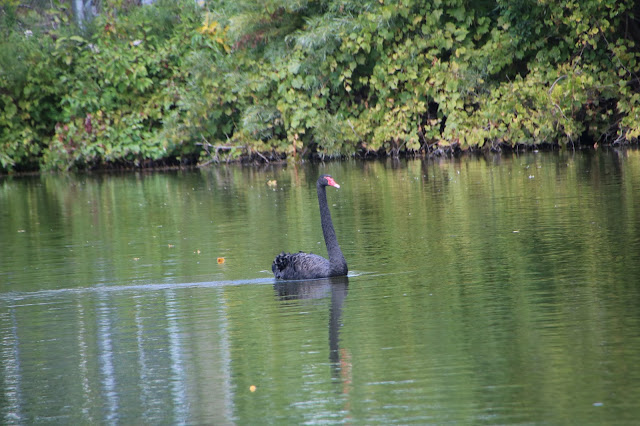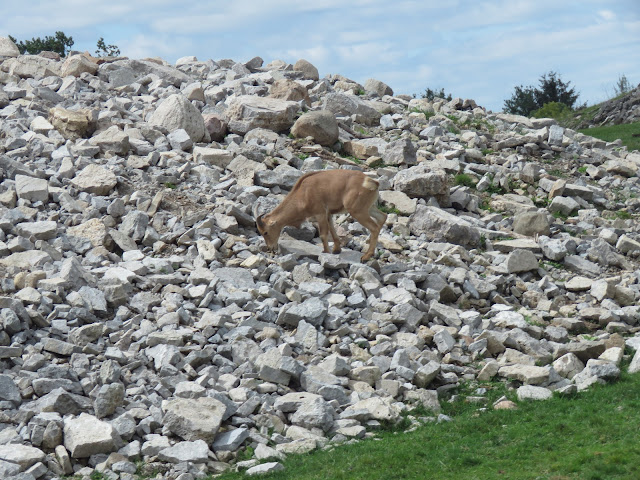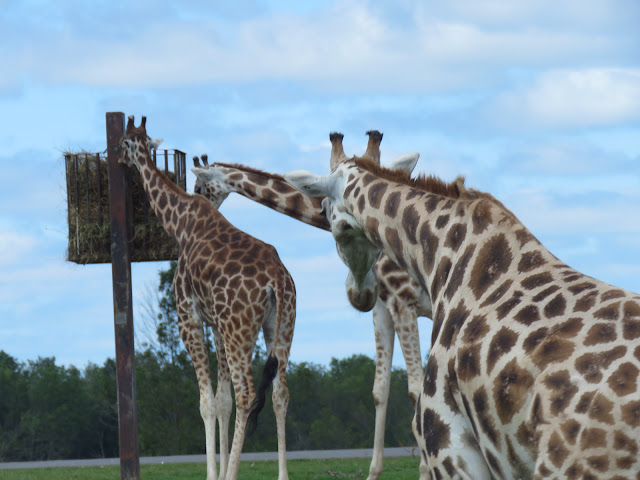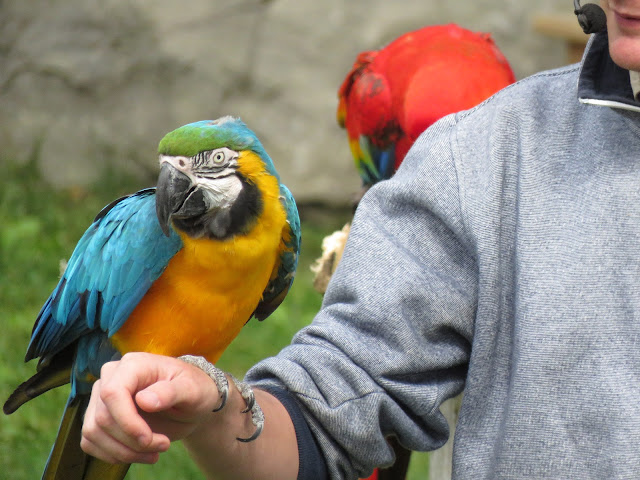John had never been to African Lion Safari and we decided to go on Thursday.
We would have waited until the kids were back in school next week but we are heading on a road trip on Tuesday.
Corporate Philosophy
African Lion Safari is a Canadian owned family business created in the name of conservation.
Our manner of exhibiting animals is completely different from the traditional approach; that is, the visitor is caged in the car, and the animals roam in 2 to 20 hectare (5 to 50 acre) reserves.
We first opened the gates to the public in 1969 with 40 lions in 3 reserves; today the park houses in excess of 1,000 animals comprised of over 100 species. After over 45 years we have been successful with breeding 30 species that are considered endangered and 20 species that are considered threatened. The original idea of "maintaining self-sustaining populations of species in decline" is still our priority.
You can choose to drive your own car through or take a bus for $5.25 per person. You get a much better view on the bus!
“African Queen” Boat Cruise
Set sail on the "African Queen" boat as you enjoy a pleasant tour around Water Safari Lake. The informative captain will take you on a cruise around the islands and point out exotic primates including the Ring-tailed lemur, black and white ruffed lemur and spider monkey.
Bird dwellers include the marabou stork, Australian black swan and the African Pink-backed pelican.
Other animals exhibited in the walk-through area include Asian elephant, American flamingo, collared peccary, black-capped squirrel monkey, Indian flying fox, alpaca, Indian peafowl, pygmy goat, African pied crow, tufted capuchin, screamer, violet turaco, Victoria crowned pigeon, and laughing kookaburra.
.
We are "caged" in a bus as we tour the Game Reserves while the animals roam freely.
Get closer than you ever imagined to majestic birds and animals from around the world as you drive along 9 kilometres of trail, through 7 large Game Reserves featuring Nairobi Sanctuary, Simba Lion Country, Timbavati Lion Country, Wankie Bushland Trail, Rocky Ridge Veldt, Eurasia and The Americas.
You will enter an environment that is home to over 1,000 birds and animals, many of which are classified as endangered or threatened species.
Duma Cheetah Preserve is home to cheetahs. This reserve features several pens where the cheetahs live either separately or grouped. The cheetahs have small house-like structures that they can rest in if they wish.
Simba Lion Country is home to African lions in their normal yellow color. The reserve consists of, like the other reserves such as the Nairobi Sanctuary, a large grassy field. This reserve is notable because it has a structure made out of rocks so the lions can rest.
Timbavati Lion Country is home to white lions, also known as Timbavati lions. This reserve also has a rock structure for the lions to rest or play on.The white lion is a rare color mutation of the lion. Up until 2009, when the first pride of white lions was reintroduced to the wild, it was widely believed that the white lion could not survive in the wild. It is for this reason that a large part of the population of white lions now reside in zoos.
The North America reserve is home to American bison, North American elk, and fallow deer. This reserve is grassy.
Parrots and toucans displayed outside the walking area of the park include African grey parrot, scarlet macaw, blue-and-yellow macaw, military macaw, great green macaw, hyacinth macaw, red-and-green macaw, Catalina macaw, white cockatoo, salmon-crested cockatoo, galah, Alexandrine parakeet, princess parrot, channel-billed toucan, and white-throated toucan.
.
Wasabi could talk.



































































Wonderful shots! It's been years since I was last there. My cousin's apple farm, which he took on from his parents, is near there. Some days he can hear the lions.
ReplyDelete